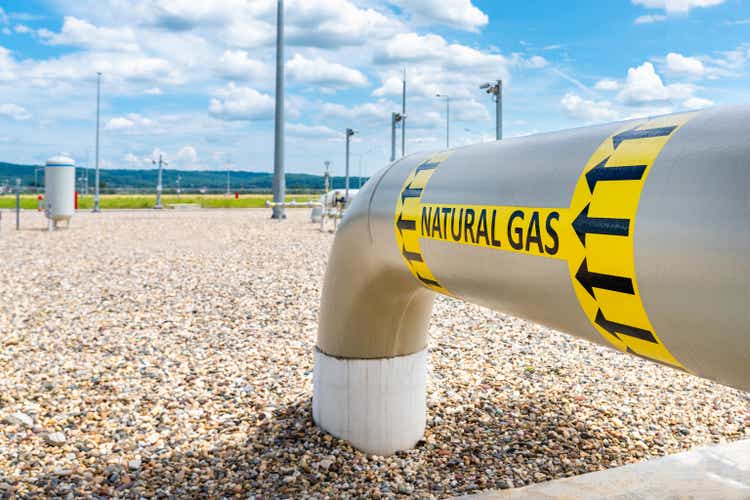Natural gas price surge influenced by supply and demand factors
Natural gas prices have recently experienced a significant upswing, propelled by a combination of tightening supply conditions and a revival in demand within key markets. Latest figures indicate a marked recovery in prices, primarily driven by heightened stockpiling efforts and overarching trends in energy consumption, especially in the Northern Hemisphere as temperatures change.
From the supply perspective, producers have been intentionally reducing output in reaction to earlier price declines, resulting in a slimmer inventory profile that’s now driving prices upward as demand rebounds. The United States, a key player in global LNG exports, has witnessed operators scale down production levels, aiding in market rebalancing after a phase of overproduction. This tightening effect is being observed across both the Atlantic and Pacific regions, where LNG spot prices are starting to strengthen.
Demand is also increasing, with buyers from Asia and Europe re-entering the market amid worries about energy security and the necessity to replenish storage before the next winter. China, in particular, has escalated its LNG imports, while European countries are continuing to veer away from Russian pipeline gas, increasing their dependence on seaborne shipments. This worldwide demand is providing price support and fostering a more positive outlook in the market.
Tariff-related disruptions have added further complexity to the supply chain, especially for Australian exporters. With trade tensions still brewing in some areas of Asia, certain supply routes are experiencing strain, contributing to supply-side limitations. For investors in Australian commodities, these circumstances present both challenges and opportunities based on their exposure to upstream assets and LNG-linked agreements.
The relationship between supply constraints and growing demand is creating a more favorable pricing landscape in the near future. Market players are attentively observing weather patterns, storage volumes, and geopolitical events, all of which could affect the pace and durability of the current price resurgence.
Fitch’s updated forecast and outlook for year-end prices
Fitch Ratings has recently revised its outlook on natural gas prices, lowering its 2025 forecast due to ongoing structural challenges, yet maintaining a cautiously optimistic perspective for the remainder of 2024. The agency now anticipates 2025 prices to average US$3.25 per million British thermal units (MMBtu), a decrease from the previous estimate of US$3.50/MMBtu. This adjustment reflects a reassessment of long-term supply dynamics and the expected increase of new production capacity, particularly from North American shale resources.
Despite this downward adjustment in the medium-term forecast, Fitch envisions a stronger pricing environment as we approach the end of 2024, citing seasonal demand growth and decreasing inventories. The agency highlights improving fundamentals, including a rise in LNG export activities and forecasts of colder weather in the Northern Hemisphere, which could prompt further reductions in storage levels. These elements are expected to exert upward pressure on spot prices, potentially bringing them back towards the US$3/MMBtu level by Q4.
For participants in the Australian market, this outlook emphasizes the importance of strategic positioning. While long-term pricing trajectories may encounter obstacles from supply growth, the short-term scenario remains advantageous for producers and traders involved with LNG-indexed contracts. Specifically, Australian LNG exporters are likely to gain from any upward trend in Asian benchmark prices, especially as Japan-Korea Marker (JKM) contracts begin reflecting premiums for winter demand.
Fitch also acknowledged the impact of geopolitical risks in its outlook, pointing out that ongoing turmoil in the Red Sea and uncertainties regarding Russian gas supplies to Europe could introduce market volatility. This could result in temporary price spikes, particularly if logistical challenges or supply bottlenecks arise. Commodity funds and energy traders in Australia are encouraged to uphold hedging strategies that accommodate both the potential for upside and the risks of downside in a market sensitive to weather conditions and geopolitical factors.
As the year advances, the interplay of global storage levels, LNG export capabilities, and regional demand fluctuations will be pivotal in determining price trajectories. Fitch’s updated guidance provides a framework for scenario analysis, particularly for institutional investors and portfolio managers operating within the energy sector. The takeaway is clear: while the structural outlook beyond 2024 may be weakening, the immediate setup offers tactical opportunities for those equipped with appropriate exposure and risk management strategies in place.
